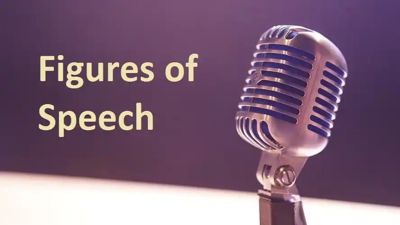Figures of speech in the Lord’s Supper

Ignoring figures of speech has led to great errors, as some take the literal figuratively and others take the figurative literally.
Jesus used lots of metaphors like, “I am the bread of life” (Jn. 6:35); “I am the light of the world” (Jn. 8:12); “I am the good shepherd” (Jn. 10:11), and “I am the true vine” (Jn. 15:5). So it’s not surprising that there are figures of speech like this in the passages in the Bible about the Lord’s Supper (Mt. 26:26-29, Mk. 14:22-25, Lk. 22:19-20; 1 Cor. 11:23-26).
What are the main figures of speech in this passage about the Lord’s Supper?
The Lord Jesus, on the night He was betrayed, took bread, and when He had given thanks, He broke it and said, “This is my body, which is for you; do this in remembrance of me.” In the same way, after supper He took the cup, saying, “This cup is the new covenant in my blood; do this, whenever you drink it, in remembrance of me.” For whenever you eat this bread and drink this cup, you proclaim the Lord’s death until He comes. (1 Cor. 11:23-26NIV)
The Lord’s Supper is a reminder of the death of Jesus just like the Passover celebration was a reminder of when God delivered the Israelites from slavery in Egypt. But these passages mention, bread, my body, a cup, my blood, and the new covenant. There are at least three kinds of figures of speech here.
Metaphor
A metaphor implies a comparison between two things that have something in common but are in general different from each other (they are not related). It’s like saying, “You are my sunshine” or “The Lord is my shepherd” or “the love of money is a root of all kinds of evil”.
The bread they were to eat was likened to Christ’s body. It represented His body. In the Passover it was unleavened bread (without yeast). As yeast is a symbol of sin in the Bible, the bread could remind us that Jesus never committed sin. Because His body was like the curtain in the temple that was torn in two (Lk. 23:45; Heb. 10:19, 29), the bread can remind us of the suffering He endured from the Jews and the Romans. And because bread was the staple food for physical life, it can remind us that faith in Jesus is necessary for spiritual life.
Metonymy
A metonymy (me-ton-y-my) is where something is described by something else that is associated with it (or related to it). Like, “can you give me a hand?” or “the team needs some new blood” or when “crown” means “king”.
Then they were told to drink from the cup. Paul calls it to “drink this cup” and he mentions someone who “drinks the cup of the Lord” (1 Cor. 11:26-27). But we drink the contents, not the cup! In this case, the container is substituted for the contents. The cup stands for its contents. Like “God so loved the world” (Jn. 3:16), which means the people who inhabit the earth. What were the contents of the cup? Matthew says that it was “from the fruit of the vine”, which was wine (Mt. 26:29, Mk. 14:25). So, in this context, “cup” means “wine” (or grape juice).
Another metaphor
The cup they were to drink from was likened to “my blood of the (new) covenant … ” (Mt.26:28). So, the wine was likened to blood, which is another metaphor.
Synecdoche
A synecdoche (sin-NECK-doc-key) is when a word for a part of something is substituted for the whole thing. Like: a room of happy faces (for people); give me a hand (for help), hungry mouths (for people) to feed; and look at my new set of wheels (for a car). Or using the term “Breaking of bread” to describe the Lord’s Supper (Acts 2:42; 20:7), which includes the “drinking of the cup” as well (1 Cor. 11:24-26).
In the Old Testament “blood” often stands for “bloodshed” or violent death or murder. Christ’s suffering included bleeding. In the New Testament, the word “blood” often means all aspects of the sacrificial death of Christ. So, the wine represents blood, which represents the sacrificial death of Christ.
More metonymy
The word “blood” is associated with a covenant because in the Old Testament covenants were ratified by the blood of sacrificial animals. Jeremiah prophesied that God would make a New Covenant with His people (Jer. 31:31-34; 32:37-40). Jesus’ death for sin ratified the New Covenant.
The “blood” is also said to be “poured out for many for the forgiveness of sins” (Mt.26:28). The word “blood” is associated with the death of Christ (via “blood-shed”). And forgiveness was one of the benefits of Christ’s sacrificial death (Mt.26:28).
Prayer
Father God, we thank you that the bread and wine in the Lord’s Supper are visual reminders of Jesus’ sacrifice for our sins. The bread reminds us of His sinless life and His suffering for us, which was the source of our spiritual life.
And the cup of wine reminds us of blood, which reminds us of bloodshed, which reminds us of the horrible suffering that the Lord endured in His sacrificial death on the cross.
But what seemed like bad news was really good news because Jesus’ death for sin ratified the New Covenant and enabled many benefits like forgiveness of sin and eternal life with the Lord. In Christ’s name, Amen.
Written, April 2024
This entry was posted on April 24, 2024 by George Hawke. It was filed under Christian, Church, Spiritual and was tagged with Communion, figure of speech, figures of speech, Lord's supper, metaphor, metonymy, synecdoche.






Leave a comment